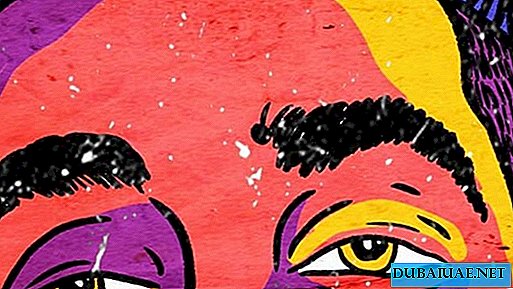THE WORKS OF THE BRIGHTEST REPRESENTATIVE OF MODERN ART YAYA KUSAMA GIVE FOOD TO THE EYES, RADIATE A STRANGE HARMONY, AND MAKE THOUGHT. IN MARCH, ITS HERE WAS VIEWED AT ART DUBAI 2014, AND IN SEPTEMBER IN LONDON, Her NEW EXHIBITION PUMPKINS, DEDICATED TO THE “GREAT PUMPKINNESS OF THE PUMPKIN”, WELL SEEN ...
Attraction by art
The work of the eccentric Japanese Yaya Kusama has something that makes her absolutely inaccessible to entire armies of artists and queens of installations. Her art is truly multifaceted, because it reads all her life experience, in which there were ups and downs, hopes and disappointments, meetings and partings. The difficult life of the artist from Matsumoto (Nagano Prefecture), who suffered from hallucinations and obsessive thoughts since childhood, was intertwined with the life of an ordinary daughter, whom her mother forced to spy on her father Lovelace. The authoritarian mother did not approve of the girl’s passion for painting and tore up the canvases that Yayoi persistently continued to paint at the age of 10. Finally, in 1948, young Kusama made the long-awaited escape from home and began to study traditional Japanese painting at the institute, but she did not like the strict discipline and hierarchical relationship between the teacher and students. From that moment, she decided to experiment with painting on her own, relying only on her own intuition.
 Kusama's early works represented a combination of traditional Japanese painting style with Western influence. Transforming her phobias into paintings and installations, the artist went to conquer New York in 1958, where she openly opposed the Vietnam War and made friends with avant-garde artists Frank Stella, Joseph Cornell and Donald Judd. It is in America that Yayoi Kusama has a long-term goal: to turn his name into a brand - and creates the Kusama Enterprises studio next to the famous Andy Warhol Factory, where he paints and sells his films, unusual projects, boldly putting his name into circulation art business. So, bags and T-shirts with a Kusama print, released in a limited edition, soft environmental sculptures, a body art festival and the film "Kusama Self-Destruction", which received awards at several prestigious film festivals, were born.
Kusama's early works represented a combination of traditional Japanese painting style with Western influence. Transforming her phobias into paintings and installations, the artist went to conquer New York in 1958, where she openly opposed the Vietnam War and made friends with avant-garde artists Frank Stella, Joseph Cornell and Donald Judd. It is in America that Yayoi Kusama has a long-term goal: to turn his name into a brand - and creates the Kusama Enterprises studio next to the famous Andy Warhol Factory, where he paints and sells his films, unusual projects, boldly putting his name into circulation art business. So, bags and T-shirts with a Kusama print, released in a limited edition, soft environmental sculptures, a body art festival and the film "Kusama Self-Destruction", which received awards at several prestigious film festivals, were born.
“Artists must protest all the time,” said Yayoi Kusama, “because there are still many problems with democracy and human rights, too many gaps between rich and poor. In Japan, there have been many political and social changes over the past decade, so I support young artists donating money and their work to cultural funds. " Today, behind her shoulders are exhibitions around the world from Singapore to Moscow, the documentary "Yayoi Kusama, I adore myself" and the most expensive "white" Infinity Net painting, sold for astronomical $ 5,100,000 at Christie’s auction.
Japanese recipe
In order to succeed, the artist needs to have three main qualities: talent, energy and a fresh look ahead of time. Of these three, the decisive in the work of Yayoi Kusama, as a rule, is the last. “From childhood, I did work with dots or peas,” says Yayoi Kusama. “In my opinion, the Earth, the Moon, the Sun and people - all represent some kind of point, the only particle among billions of others. That’s the essence of my philosophy which is of interest to people. "
When Marc Jacobs invited the artist to work with Louis Vuitton, she eagerly accepted the proposal and, despite her old age (at that time she was 82 years old), she enthusiastically plunged into the development of product design. As a result, in 2012, brand sales increased rapidly. The key to success was the relaxed and playful femininity of the Louis Vuitton collection, created by Yaya Kusama. The traces of the lucky avant-garde’s talent are obvious: a lemon-yellow dress with black peas, with frills on a skirt, a classic transparent trench coat strewn with red or black peas to choose from, silk scarves and massive bags ... "She drew energy and inspiration from her fairy-tale world that never doesn’t end "- Mark Jacobs shared his impressions.
The artist’s frank sensuality and observation prompted her to create the Infinity Mirrored Room - Filled with the Brilliance of Life exhibition, which was held in a large mirror room, the walls, ceiling and floor of which reflected a pool of water. Hundreds of small round light-emitting diodes stuck to the ceiling flashed in the dark in different color combinations and gave the audience a new experience of experiencing in infinite space.
In another installation I'm Here, but Nothing, which was exhibited at the Tate Modern Gallery in London in 2012, fluorescent stickers filled the living room - peas that flickered and repeated everywhere: on armchairs, a sofa, walls and utensils, giving the impression of peace, as if seen through a magical prism. Such a stay in virtual nirvana fascinated the audience, forcing time to stop.
In Dubai, Yaya Kusama first exhibited with great success in 2012 under the wing of the London Victoria Miro gallery at the Art Dubai contemporary art fair. In 2014, at the same Art Dubai, Kusama's A Blue Song, the "final flower of her long and vibrant career," according to art critics, became the main decoration. It seems that the paintings of a miniature Japanese woman are able to breathe and have a "post-hypnotic" effect, it is no coincidence that she became the first woman to receive the Imperial Prize Praemium Imperiale - the most prestigious award in Japan for the worldwide recognition of artists.
In September, London’s Victoria Miro Gallery kicks off a new Kusama Pumpkins exhibition. Pumpkin as an art object first appeared in some of Kusama's works in 1948, and later, after the artist returned from New York to Japan, she again became the central symbol of many of her works. The artist does not hide that she has a strong personal identification with a bright orange vegetable, "food of the gods", and admires the pumpkin for "endurance, consistent quality and unique pleasant properties." "Contemporary art is always an exhausting work, in which there is no place for luck, and there is a place for only blind dedication." Kusama admits that she simply has to fulfill her duty and destroy the usual stereotypes and cliches. Is always.












